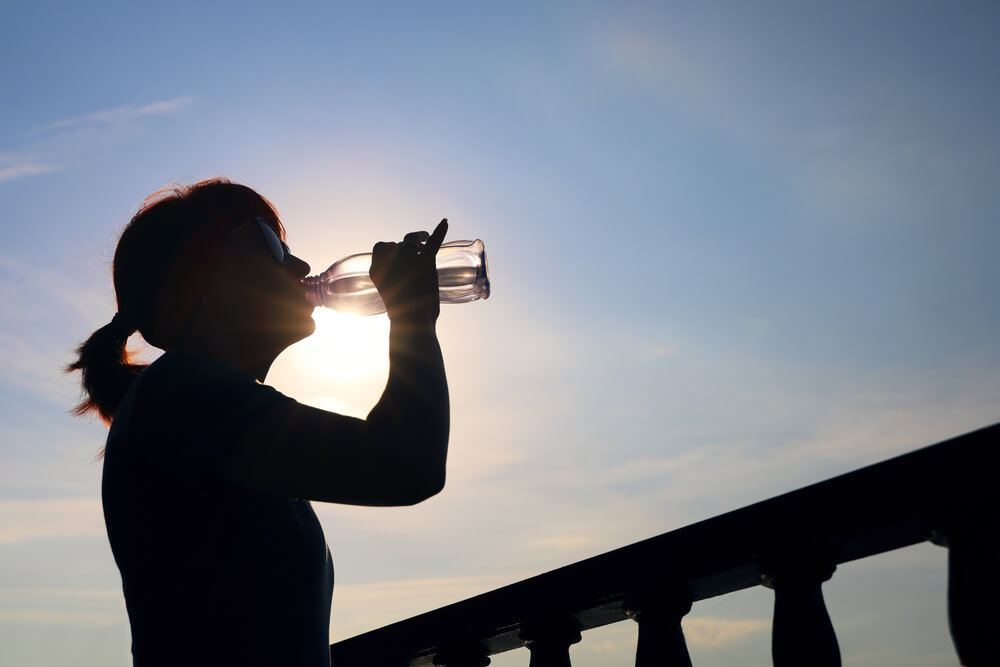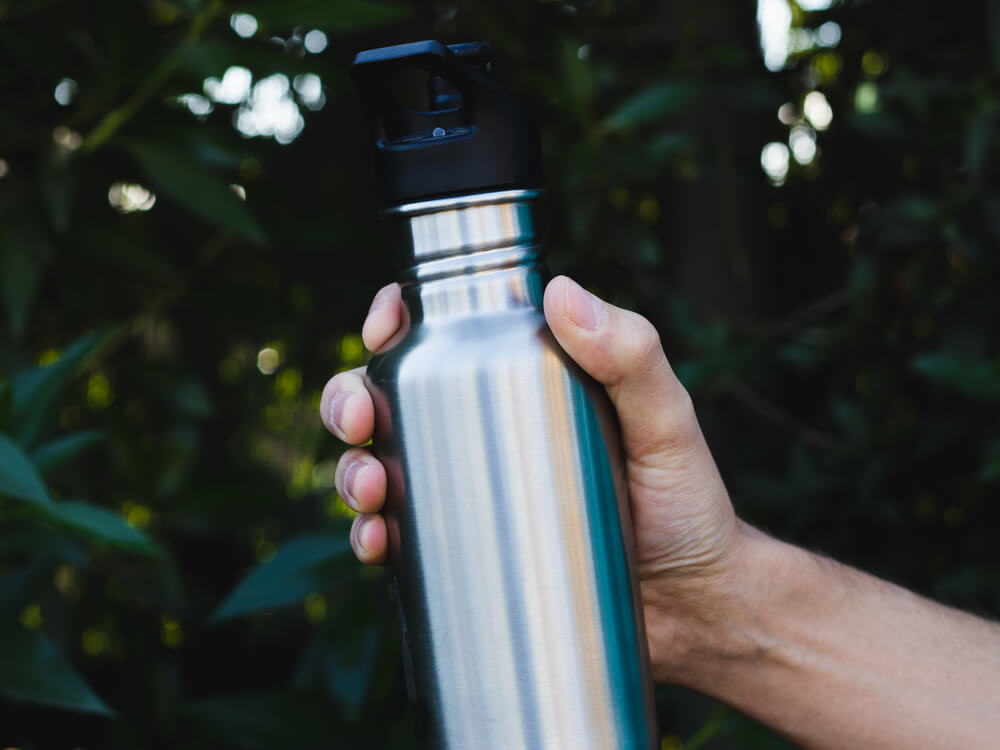There are a lot of options for reusable water bottles: glass, plastic, stainless steel. The question is, which is best? And are they all safe to use?
The Problem with Single Use Water Bottles
It’s important to understand why we can’t keep doing what we’re doing, using single-use water bottles. To put it precisely, single-use plastic bottles are an environmental catastrophe. In the US alone, we use 70 million bottles a day! (Container Recycling Institute)
While it’s great that everyone is drinking more water, plastic bottles are creating an environmental crisis. Less than 29% of all plastic bottles in the US are recycled. The rest of them end up in landfills, our waters, and our oceans.
The best way to eliminate all of those bottles is to reuse the containers we drink water out of. Use glasses at home. Use reusable bottles when we’re out and about.
You need a reusable water bottle.
The Problem with Plastic Reusable Bottles

The biggest problem with plastic reusable bottles is, well, they’re still plastic. At some point, when you get bored with it or it gets too dirty or they crack, you’ll need to discard it. They will put another plastic bottle, much thicker than a single-use bottle, that has to be dealt with.
That bottle still has the same fundamental problem as the single-use bottles. They need to be recycled. If you’re lucky, your local community is recycling plastic efficiently.
“Some materials are recycled at relatively high levels: more than two-thirds of paper and about a third of aluminum. But for plastic, the rate is just eight percent. Another 16 percent is incinerated. The vast majority of plastic — that remaining 76 percent — ends up in landfills.” – PBS
While you might get months or even years of use out of a plastic, reusable water bottle, it’s still likely to end up in a landfill.
Also, plastic bottles are not recommended for hot liquids. The plastic will leach out chemicals when heated.
You can learn more about plastic versus stainless steel bottles here: https://waterbottle.io/reasons-why-you-er-a-plastic-one-bottle-over-a-plastic-one/.
The Problem with Glass Bottles
Glass reusable water bottles are also problematic.
While glass is 100% recyclable, almost all of the glass bottles on the market have plastic wrapping to protect them. This is because the glass breaks relatively easily.
And that’s the other problem. One good drop and your bottle is in pieces on the floor. Now you have glass to discard and a plastic case that probably can’t be recycled.
Aluminium Bottles are Not Great Either
Aluminum bottles are not a great choice either.
To keep acidic liquids from leaching chemicals out of the aluminum, many are lined with plastic or epoxy resin. Some of that lining contains BPA or other chemicals that are harmful.
While the aluminum is recyclable, the resin or plastic lining won’t be recycled. It’s more likely to be incinerated or simply end up being washed away into the water supply.
In all of these cases, there are people who will disagree with each type of water bottle, but the one thing everyone seems to agree on, stainless steel water bottles are a better, safer, and more environmentally friendly choice.
The Stainless Steel Water Bottle

High quality stainless steel reusable water bottles are the answer.
First, they can be recycled over and over.
“Stainless steel can be recycled without any degradation – this means products made from 100% recycled stainless steel are viable as the only limit on the ratio is the availability of scrap material.” – Green Living Tips
Second, a stainless steel bottle can handle getting dents and more. Not only are they durable, they will still work even when damaged.
Third, you can use your stainless steel bottle for hot liquids, as well as cold. Because stainless steel is food grade, you can even use it to make and hold tea.
Are Stainless Steel Water Bottles Safe to Use?
Yes. 100% yes.
Using 18/8 or #304 stainless steel, which is food grade stainless steel, it’s completely safe. It won’t leach chemicals or minerals.
The key is to be sure that you purchase only the highest quality stainless steel.
While plastics contain chemicals that can leach out and be harmful at even the smallest quantities, stainless steel doesn’t do that.
It’s also very easy to clean. As anyone who has ever cleaned a stainless steel pan knows, with a little soap, the steel comes completely clean.
Since it’s a sterile product, stainless steel retards mold and mildew growth. Anyone who’s ever owned a plastic or glass water bottle knows that mold or mildew will often grow on them. Stainless steel prevents that entirely.
As mentioned above, unlike other types of bottle, a little damage, such as dropping your bottle while on a hike, a dent or ding won’t hurt it.
Since stainless steel is inert, it doesn’t require a plastic lining. Safer and not requiring plastics, stainless steel is simply a better choice.
What is 18/8 Stainless Steel?
18/8 stainless steel, also called 304 grade stainless steel, is made from 18% chromium, 8% nickel. It has less than 0.8% carbon and at least 50% iron.
The chromium keeps oxygen from binding with the iron and causing rust (oxidation).
The key to making sure you’re getting only the top quality product is to look for 18/8 or 304 grade stainless steel. This is the stainless that high-quality pots and pans are made from.
It will last for years and won’t degrade.
Buying the Right Water Bottle
Bravo for looking for a reusable water bottle of any kind. It’s great that you’re moving away from single use water bottles.
While any change is an improvement over the water bottles that we’re throwing away now, stainless steel is the obvious choice for a water bottle that will last for years, can take a beating, and is 100% recyclable.
Look for a reputable retailer that’s selling the highest quality. They will often offer warranties because they know that this type of stainless steel is extremely durable.

